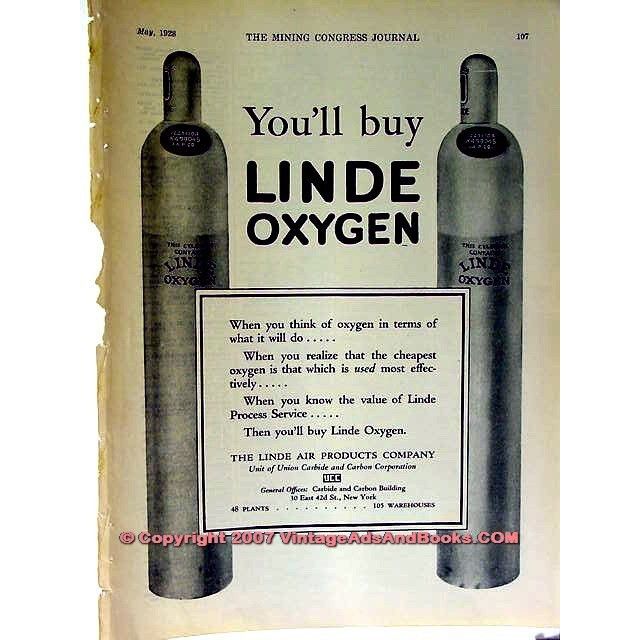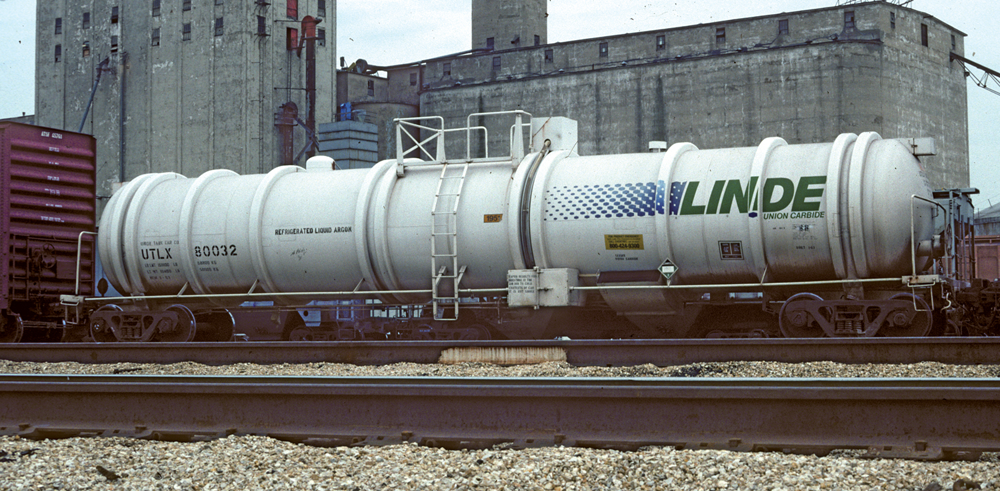Model Information: Broadway Limited announced this model in November of 2018.
Features:
Features:
- Precision Paint, Color, and Lettering Schemes
- Many Separately Applied Details including Hand Rails, ladders, brake wheel, roof walkway
- Beautifully Detailed and Accurately Modeled
- Precision Paint, Color, and Lettering Schemes
- Composition: ABS
- Couplers: (2) Operating MicroTrains Compatible
- Compatible Tracks: Code 55, 70 and 80 Rail
- Minimum Operating Radius: 9.75 in
Prototype History: High Capacity Railroad Tank Cars for Cryogenic Fluids, or Cryogenic Tank Cars for short, are used for the transportation of super-cold fluids such as liquid oxygen, nitrogen and argon. These tank cars solved the problem of maintaining extremely low temperatures while transporting large quantities of these materials over long distances.
These high capacity tank cars could transport more than 15,000 gallons of liquid oxygen--which is about double what any of its predecessors could do.
Cryogenic Tank Car Designations: DOT 113; AAR 204 and 204XT.
Cryogenic railroad tank cars are usually constructed of nickel or stainless steel as a tank within a tank. Because cryogenic liquids are very cold, insulation is placed between the two tanks and a vacuum pulled on the space to maintain the temperature. This process will allow the tank car a 30-day holding time.
Cryogenic cars transport various gases, including flammable hydrogen, liquid oxygen and poisons. Some cryogenic gases, such as nitrogen and argon, are considered inert. Temperatures of these liquefied gases can range from the warmest, carbon dioxide at –130°F, liquid oxygen at -297°F, liquid argon at -302°F, liquid nitrogen at -320°F, to the coldest, helium at –452°F. Thermal hazards of these materials are significant.
In addition to thermal hazards, cryogenic liquids have a large liquid-to-vapor expansion ratio. A small leak from a valve or container can create a large vapor cloud. Some ratios are as great as 900 to 1, meaning one gallon of cryogenic liquid can produce over 900 gallons of gas.
From Broadway Limited International and Firehouse
These high capacity tank cars could transport more than 15,000 gallons of liquid oxygen--which is about double what any of its predecessors could do.
Cryogenic Tank Car Designations: DOT 113; AAR 204 and 204XT.
Cryogenic railroad tank cars are usually constructed of nickel or stainless steel as a tank within a tank. Because cryogenic liquids are very cold, insulation is placed between the two tanks and a vacuum pulled on the space to maintain the temperature. This process will allow the tank car a 30-day holding time.
Cryogenic cars transport various gases, including flammable hydrogen, liquid oxygen and poisons. Some cryogenic gases, such as nitrogen and argon, are considered inert. Temperatures of these liquefied gases can range from the warmest, carbon dioxide at –130°F, liquid oxygen at -297°F, liquid argon at -302°F, liquid nitrogen at -320°F, to the coldest, helium at –452°F. Thermal hazards of these materials are significant.
In addition to thermal hazards, cryogenic liquids have a large liquid-to-vapor expansion ratio. A small leak from a valve or container can create a large vapor cloud. Some ratios are as great as 900 to 1, meaning one gallon of cryogenic liquid can produce over 900 gallons of gas.
From Broadway Limited International and Firehouse
Road Name History:  The Linde Group, a German chemical company, founded Linde Air Products in 1907 as a US subsidiary. In 1917, during the First World War, the company was expropriated by the United States government and then acquired by Union Carbide, which operated it as a subsidiary. The Tonawanda, NY facility was instrumental in the development of the atomic bomb as the uranium used in the early bombs was processed there.
The Linde Group, a German chemical company, founded Linde Air Products in 1907 as a US subsidiary. In 1917, during the First World War, the company was expropriated by the United States government and then acquired by Union Carbide, which operated it as a subsidiary. The Tonawanda, NY facility was instrumental in the development of the atomic bomb as the uranium used in the early bombs was processed there.
The Linde Air Company performed uranium and nickel processing for the Manhattan Engineer District (MED) and the Atomic Energy Commission (AEC) at the Ceramics Plant in Tonawanda. African and Canadian ores were milled to black oxides at the plant. Documents indicate that the facility was placed on standby as of March 1, 1950. Linde's contractual agreements with the AEC continued through 1953 for various activities relating to closing out work at the Tonawanda location. Linde was a part of Carbide and Carbon Chemical Corporation (C&CCC), which then became Union Carbide.

The Linde Air Company performed uranium and nickel processing for the Manhattan Engineer District (MED) and the Atomic Energy Commission (AEC) at the Ceramics Plant in Tonawanda. African and Canadian ores were milled to black oxides at the plant. Documents indicate that the facility was placed on standby as of March 1, 1950. Linde's contractual agreements with the AEC continued through 1953 for various activities relating to closing out work at the Tonawanda location. Linde was a part of Carbide and Carbon Chemical Corporation (C&CCC), which then became Union Carbide.
Brand/Importer Information:  Broadway Limited Imports, LLC defines itself as "the world's foremost producer of top-quality HO and N scale model trains".
Broadway Limited Imports, LLC defines itself as "the world's foremost producer of top-quality HO and N scale model trains".
The company was founded in 2002 and introduced its first N scale model in 2009.
Broadway Limited Imports is composed of a team of 15 fun loving individuals who are dedicated to creating the most realistic model railroading experience possible, with the best customer service possible.
The Broadway Limited Imports headquarters is located in Ormond Beach, Florida at 9 East Tower Circle. It's just under an hour's drive from Disney World.
About Broadway Limited Imports.

The company was founded in 2002 and introduced its first N scale model in 2009.
Broadway Limited Imports is composed of a team of 15 fun loving individuals who are dedicated to creating the most realistic model railroading experience possible, with the best customer service possible.
The Broadway Limited Imports headquarters is located in Ormond Beach, Florida at 9 East Tower Circle. It's just under an hour's drive from Disney World.
About Broadway Limited Imports.
Item created by: CNW400 on 2020-06-20 11:48:13
If you see errors or missing data in this entry, please feel free to log in and edit it. Anyone with a Gmail account can log in instantly.
If you see errors or missing data in this entry, please feel free to log in and edit it. Anyone with a Gmail account can log in instantly.









